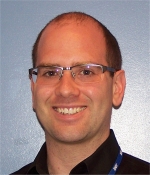
Last week, I and about 600 other scientists attended the biennial International Global Atmospheric Chemistry (IGAC) conference in Beijing, China. This year’s theme was “Atmospheric Chemistry in the Anthropocene” – that is, how people have changed our atmosphere since the Industrial Revolution.
Those changes are obvious in Beijing, where the huge number of people crowded into the city leads to very high emissions of air pollutants, which then creates a brown cloud of photochemical smog that blocks the view of the horizon. This cloud was particularly thick during our visit to the Forbidden City, but luckily it mostly stays below the Great Wall of China. Although I’m glad I don’t have to breathe Beijing’s air every day, the trip gave me the chance to finally “see” air pollution after all these years of studying it!
Address photochemical smog
The presentations at the IGAC conference gave some hope for cleaning up air pollution in “megacities” like Beijing. David Parrish of the NOAA Earth Systems Research Lab showed that maximum ozone levels in Los Angeles have dropped by a factor of 4 since the 1970s, with similar decreases in other US and European cities as a result of air pollution regulations.
Understand the chemistry of smoke from forest and savannah fires
However, ozone levels in remote, rural sites are increasing, and the formation and transport of this “background” pollution is becoming a bigger air quality concern. Part of this “background” pollution comes from forest and savannah fires, and understanding the chemistry of the smoke from these fires is a key focus of my research at AER. At the IGAC conference I showed some preliminary results from these studies, which suggest that the ozone formation seen in these smoke plumes is due to an as yet unidentified source of hydroxyl (OH) radicals within the smoke plumes.
The IGAC conference was a great chance to interact with scientists from all over the globe studying air pollution and to learn new things – not the least of which is that KFC is apparently really popular in Beijing. Still, it’s good to be home, where the sky is (generally) blue and the air is (usually) safe.
Click here for Matt Alvarado's research
Check out AER's Atmospheric Composition and Air Quality research
